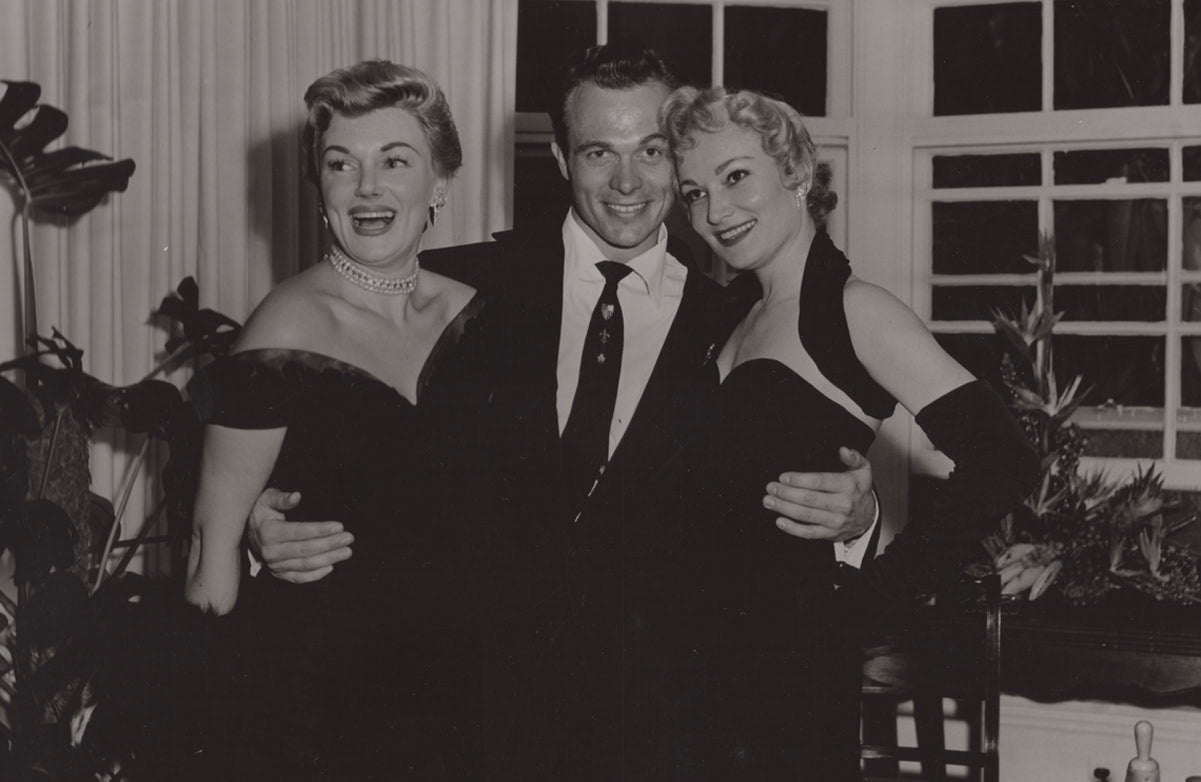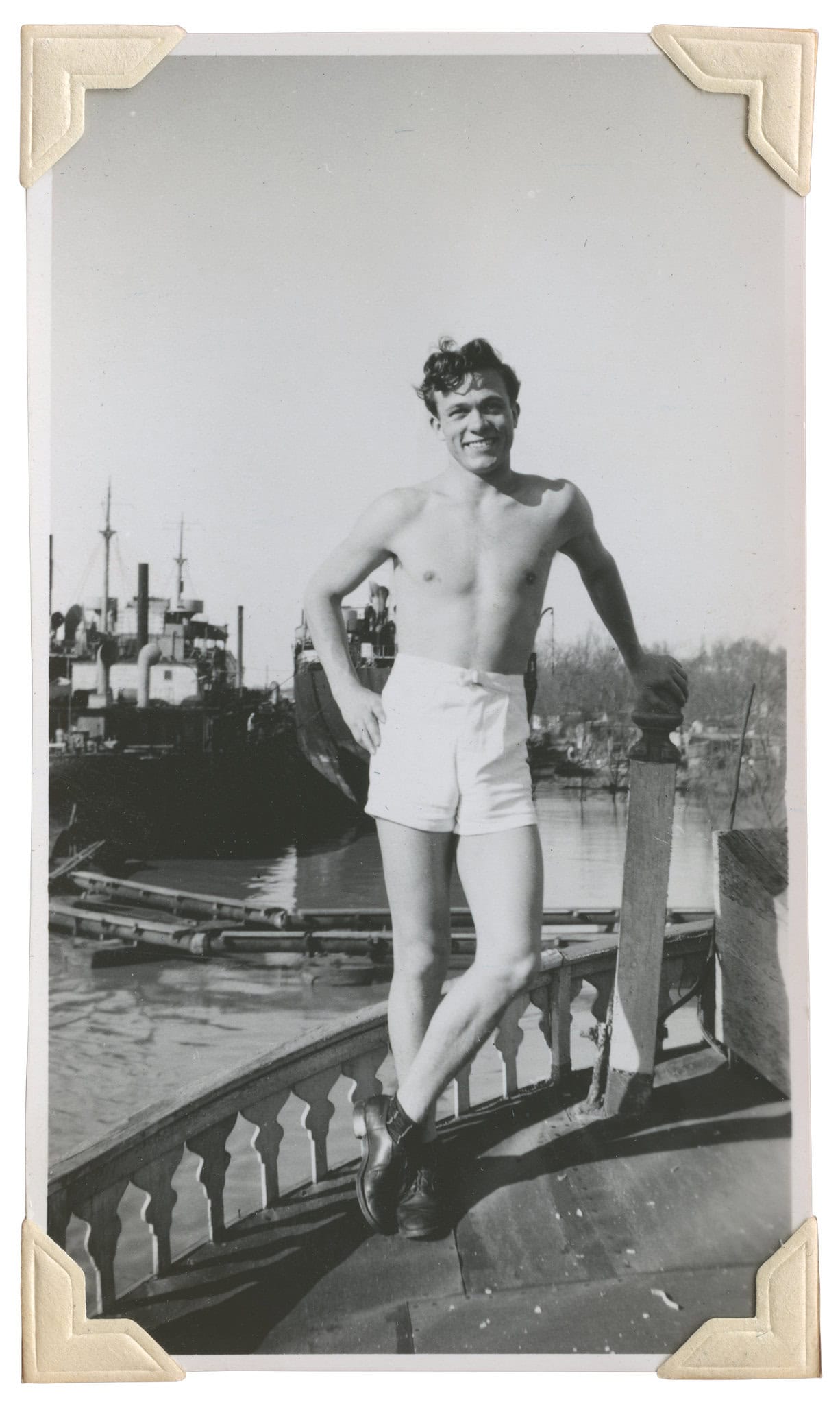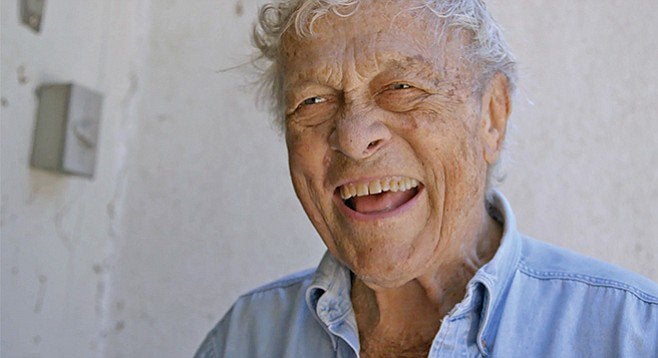Go to any souvenir shop in Greece and you’ll see them: statuettes of demonically grinning little satyrs with giant phalluses.
Scotty Bowers in Scotty and the Secret History of Hollywood is the human embodiment of that giggling, pleasure-seeking ready-for-anything sybarite. At age 94, he has the curly blond hair of a Hollywood-style Roman emperor, with startling blue eyes and an R-rated vocabulary. Bowers lives in a hoarder’s Shangri-La, a Hollywood Hills cottage filled to the brim with clutter and boasting an enviable view of downtown Hollywood. His sharp-tongued, torch singer wife Lois says she wishes she had known about Bowers’s past before she married him. But it’s too late now.
Bowers is the author of the tell-all memoir Full Service: My Adventures in Hollywood and the Secret Sex Lives of the Stars. What his wife wishes she knew was that during Hollywood’s golden age in the 1940s, Scotty Bowers was a “connector,” or “procurer” as one of his contemporaries muses. Operating out of a gas station on Hollywood Boulevard immediately after World War II, the ex-Marine provided Hollywood’s elite with a rotating cast of beautiful men (and sometimes women), including many his fellow servicemen looking to make money after serving overseas.
The idea came to Bowers when the strapping, all-American hunk—in vintage photographs, Bowers looks like a cross between Richard Widmark and Tab Hunter—was himself picked up by Walter Pidgeon while working at a gas station. Ushered into a world of swimming pools, mansions, fame and celebrities looking for a discreet hook-up, Bowers discovered an underground industry of wealthy men (and sometimes women) willing to pay for sex and a bevy of beautiful young things apparently happy to accommodate them. At one point, famed midcentury sex researcher Alfred Kinsey gets wind of Bowers and finds a fascinating case study of polymorphous perversity. After Bowers fills out Kinsey’s sexual history survey, Kinsey discovers there appears to be nothing Bowers hasn’t done. In perhaps the film’s most shocking sequence, Bowers matter of factly describes a childhood where an array of grown-ups, including Catholic priests, paid him out of their collection plates for sex. Bowers breezes past that childhood sex abuse as seemingly inconsequential; the death he saw in World War II and his own daughter’s death from an illegal abortion, now those were traumatic, he confesses.
No depressing tales of sex trafficking here: director Matt Tyrnauer seems determined to sell a definitively positive vision of this secret sexual economy. Though it has some of the winking, sly take on nostalgia of the quirky 2002 portrait of Hollywood super producer Robert Evans, The Kid Stays in the Picture, Scotty has less of that film’s polish and finesse. Tyrnauer has distinguished himself with captivating documentaries on Italian fashion designer Valentino Garavani in Valentino: The Last Emperor and urban activist Jane Jacobs in Citizen Jane: Battle for the City, but here he seems to have surrendered all control to the chaos machine that is Scotty Bowers.

The men interviewed for Scotty and the Secret History of Hollywood seem to similarly marvel at their good fortune. Tyrnauer interviews some of Bower’s former studs, many of whom still consider Bowers a dear friend and express gratitude for how his arrangements set them up with a comfortable life. Perhaps in a world determined to suppress homosexuality it was just thrilling to know there were so many other gay men in the world. Even today, Bowers seems amazed at his luck: while a fair number of his countrymen left lives or limbs in the Pacific, Bowers was sunbathing in the altogether with movie stars and screwing like a rabbit.
Though they aren’t around any more to counter his claims, Bowers recounts that Charles Laughton, Tom Ewell, Cole Porter and even the posh twosome, the Duke and Duchess of Windsor, were all clients who procured sexual companions through Bowers. Not just a “gentleman hustler,” Bowers was a participant too, enjoying the Valhalla of regret-free sex before the scourge of AIDS.
It’s easy to feel two ways about Scotty and his saucy take on Tinseltown. On one hand, the film parts the curtain on a hidden world of closeted gay men who indulged themselves despite society’s denial and hatred of homosexuality. The excesses of the ’60s counterculture or ’70s Studio 54 hedonism have nothing on the copious cheesecake photos of grinning, gloriously nude men, the blue movie footage of orgies, George Cukor’s all-male nude pool parties and Bower’s own home movies. The film dispels all simplistic visions of the past as a more innocent and wholesome time.
On the other hand, for many observers there is the impropriety of, first Bowers’s book, and now a film “outing” gay men and women long after they can speak for themselves. As much as the #metoo movement has revealed the true, exploitive secret economy of doing business in Hollywood, Scotty and the Secret History of Hollywood is a revisionist vision of America’s sex life that will be bitter poison to some and a frank reckoning for others.
Scotty and the Secret History of Hollywood opens August 31 at Landmark Midtown Art Cinema.






